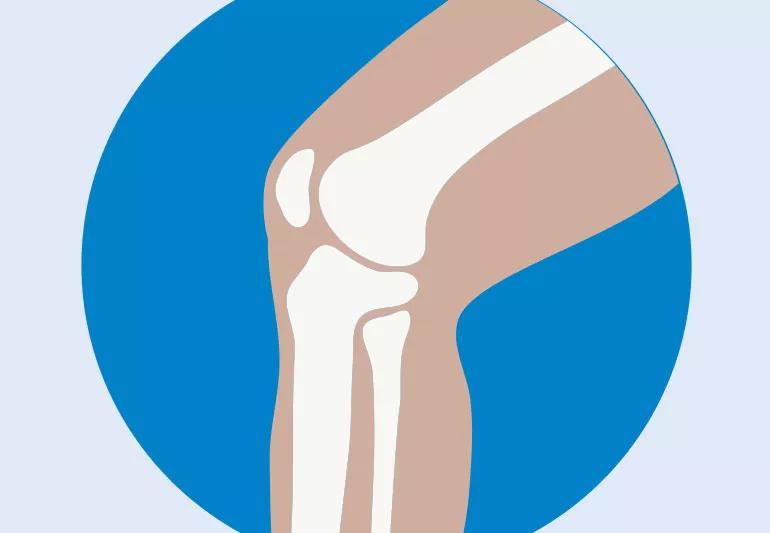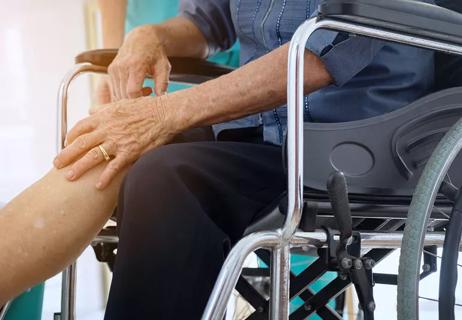Advertisement
Understand this alternative to a total knee replacement

Total knee replacement is among the most common surgeries performed in the United States. It’s done if you have severe osteoarthritis that can no longer be managed with nonsurgical treatment.
Advertisement
Cleveland Clinic is a non-profit academic medical center. Advertising on our site helps support our mission. We do not endorse non-Cleveland Clinic products or services. Policy
The surgery has a great track record for relieving pain and improving function. But it’s a major operation with a relatively long rehabilitation period. Some people with advanced knee osteoarthritis can get similar results with a faster recovery and other benefits by getting a partial knee replacement.
Partial knee replacement isn’t for everyone — and there are trade-offs. But for people who meet the criteria, there are advantages. For example, “patients who get a partial knee replacement are more likely to feel like they have a normal knee,” says orthopaedic surgeon Peter Brooks, MD.
Osteoarthritis is caused by deterioration of cartilage in your joints. (Cartilage is the tough material that covers the ends of your bones, providing a smooth gliding surface.)
In the knee joint, where the thigh bone (femur) meets the shinbone (tibia), there are three places where bones make contact:
These three points are called compartments. If your arthritis is limited to one compartment, you may be a candidate for partial knee replacement.
To be eligible, you’ll also need sufficient range of motion and intact ligaments around your knee. Injury to the anterior cruciate ligament (your ACL, which is in the middle of your knee joint) is common, and it would disqualify you from having partial knee replacement.
Advertisement
A partial knee replacement (aka a unicompartmental knee replacement) is similar to total knee replacement, except that the metal and plastic implant that replaces damaged bone and cartilage is placed only on the affected compartment. Most people with unicompartmental arthritis have it on the medial side.
Healthy cartilage, bone and ligaments are left alone. For this reason, most people report having a more natural-feeling knee. Rehab is quicker and easier than with total knee replacement (lasting about three weeks).
Because it’s a smaller operation, there’s less pain after surgery and lower risk for complications. Surgical risks include infection, blood loss, blood clots and injury to a blood vessel or nerve. These are rare, and they’re even less likely with partial than with total knee replacement.
“People who get a partial knee replacement are often happier than those who get a total knee replacement,” Dr. Brooks says.
The downside to partial knee replacement is that there’s a higher risk that it will have to be revised in the future to a total knee replacement. There are several reasons for this. Common ones include:
This article was adapted from Cleveland Clinic Arthritis Advisor.
Advertisement
Learn more about our editorial process.
Advertisement

The short answer from an orthopedic surgeon

Perfecting the squat before trying a lunge can start you off on the right foot

These creams that you apply to your skin can actually help reduce localized pain, swelling and inflammation

This satisfying, involuntary act of yawning and stretching helps release tight muscles

If soaking your feet, disinfecting your shoes and making lifestyle changes don’t do the job, it’s time to talk to a doctor

Genetics, hormones, medications and stress are just a few reasons your feet could be extra funky

While an ultrasound shows your muscles and tendons, an MRI also shows your joint cartilage, bones and heart chambers

Sitting for long hours, like at your desk job, can make your butt sag — among other effects

If you’re feeling short of breath, sleep can be tough — propping yourself up or sleeping on your side may help

If you fear the unknown or find yourself needing reassurance often, you may identify with this attachment style

If you’re looking to boost your gut health, it’s better to get fiber from whole foods